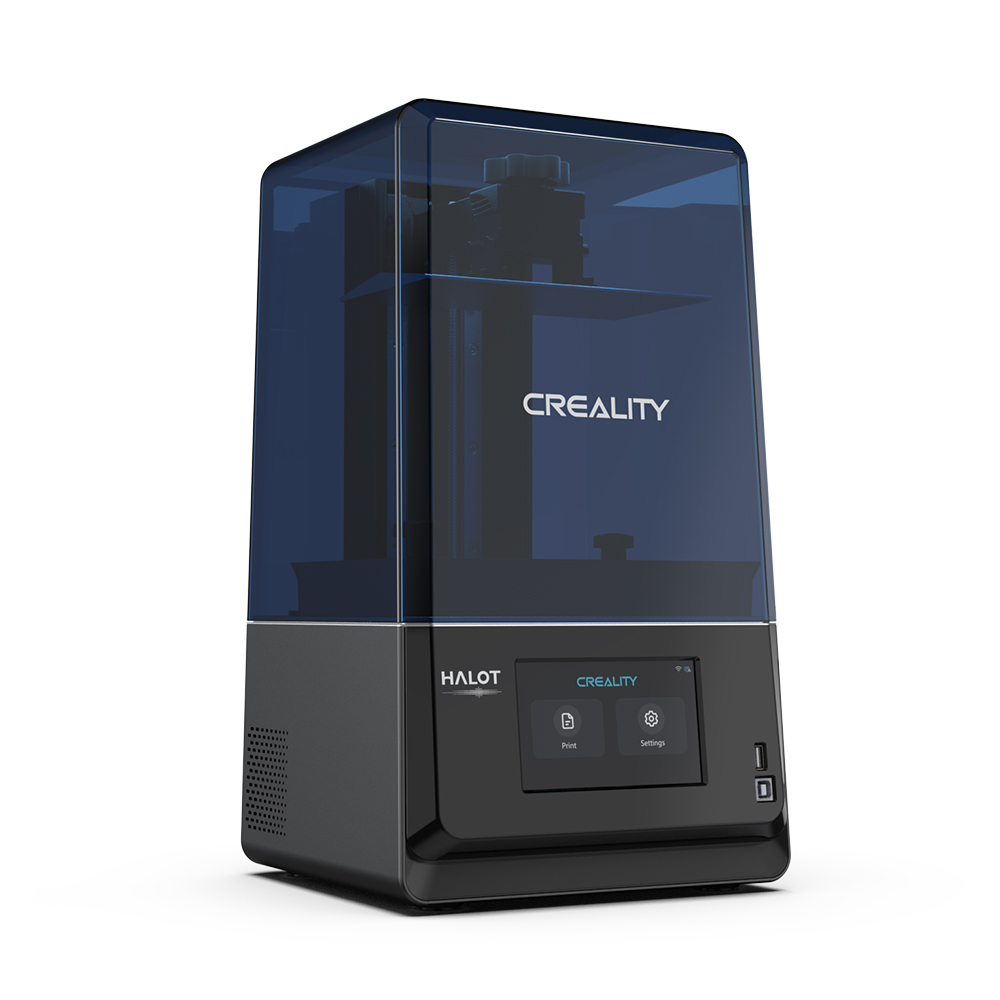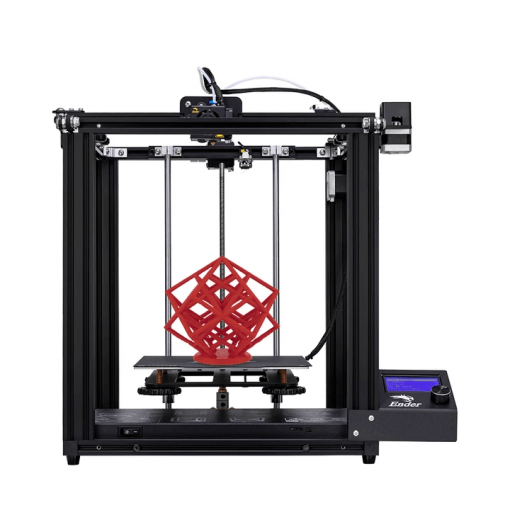Compare Halot One Plus vs Ender 5
Comparison between the best 3D printers
Choose the best 3D printer at the best price. The cheapest 3D printers are here.
Buy a 3D printer here with 3D Fila.
 |
 |
|
| Model | Halot One Plus[BUY Halot One Plus] |
Ender 5[BUY Ender 5] |
| Printing Material | Resin | Filament |
| Buy Resin for Creality 3D Halot One Plus | Buy Filament forCreality 3D Ender 5 | |
| Estimated price | $399,00 | $399,00 |
| Manufacturer | Creality 3D | Creality 3D |
| Release Year | 2022 | 2020 |
| Print Volume [mm] | 102x172x160 | 220x220x300 |
| Printer Size [mm] | 236x245x416 | 485x510x552 |
| Weight [kg] | 6,8 | 11,8 |
| Power Loss Recovery | NO | YES |
| Maximum Resolution [mm] | 0,1 | |
| Processor | 32 bits | |
| Display | Mono | |
| Power Supply | 24V / 360W | |
| Connectivity | USB / Wi-Fi | SD / USB |
| Operating systems | Windows, Mac, Linux | |
| Date of registration in the system | 2022-10-11 | 2021-04-15 |
| Release date | 2022 | 2020 |
| Extra features | Crealitys Halot-One Plus printer stands out for its 4K+ resolution that delivers sharp details and consistent surfaces. It features a fast and responsive 5-inch LCD interface, as well as easy-to-use Halot Box software. It offers Wi-Fi connectivity and remote print monitoring, as well as an integrated air filtration unit, a rare feature in this price range. The Halot-One Plus is designed for the prosumer market, combining high quality with advanced features such as Wi-Fi and air filtration. During testing, it stood out for implementing these features at an affordable cost, while maintaining functionality. It features an attractive design with a UV-resistant blue cover and a robust dual rail system for the Z-axis, ensuring smooth and consistent movements. The large LCD and high resolution of the LCD mask (4320 x 2560) are other strong points, allowing for fine details and textures in prints. | Crealitys Ender 5 stands out with a solid frame and a larger 220 x 220 x 300mm print volume. Its assembly is simple and quick, offering high print quality and speeds of up to 80mm/s. With a magnetic bed, it makes it easy to remove prints. Notable for being hackable and expandable, the Ender 5 continues Crealitys innovative tradition in the affordable 3D printer market. Equipped with a 350W/24V Meanwell power supply, it heats up quickly, in addition to having efficient cable management and modified Marlin firmware. Its unique design includes dedicated stepper motors for each axis and smooth movement on the Y axis, providing more consistent and detailed prints. |
| Support for multiple colors and materials (AMS and CFS) | NO | NO |
Notes * |
||
| Cost-benefit | 8 / 10 | 7 / 10 |
| Hardware | 1.4 / 10 | 1.5 / 10 |
| Tela | . | . |
| Print volume | 3 / 10 | 3 / 10 |
| Performance | 9 / 10 | 1 / 10 |
| [BUY Halot One Plus] | [BUY Ender 5] |
Conclusion |
| In comparing the Creality 3D Halot One Plus and the Ender 5, both models present solid options within the same price bracket, yet cater to different user needs and preferences. The Halot One Plus is tailored towards users who prioritize high-resolution prints and advanced features. With its 4K+ resolution and integrated air filtration, it excels in creating intricate details while also providing conveniences such as Wi-Fi connectivity and a user-friendly interface. This printer is lightweight and compact, making it ideal for those looking for a prosumer-grade machine without compromising on quality. However, its smaller print volume may limit larger projects. On the other hand, the Ender 5 offers a robust build with a larger print volume, making it more versatile for a range of projects. Known for its reliability and print speed, this model is easy to assemble and highly hackable, appealing to users who enjoy customizing their setups. However, it lacks some of the advanced features found in the Halot One Plus, such as power loss recovery and Wi-Fi capabilities. Ultimately, the decision between these two printers should hinge on the specific needs of the user. For those seeking precision and advanced features in a compact design, the Halot One Plus is the clear choice. Meanwhile, if larger print capabilities and robustness are the main priorities, the Ender 5 stands out. Both printers exemplify excellent cost-benefit ratios, making them strong contenders in their respective niches. |

